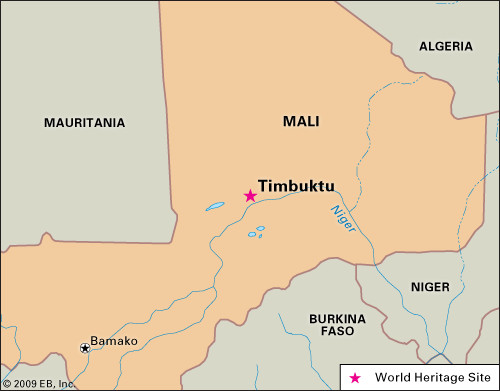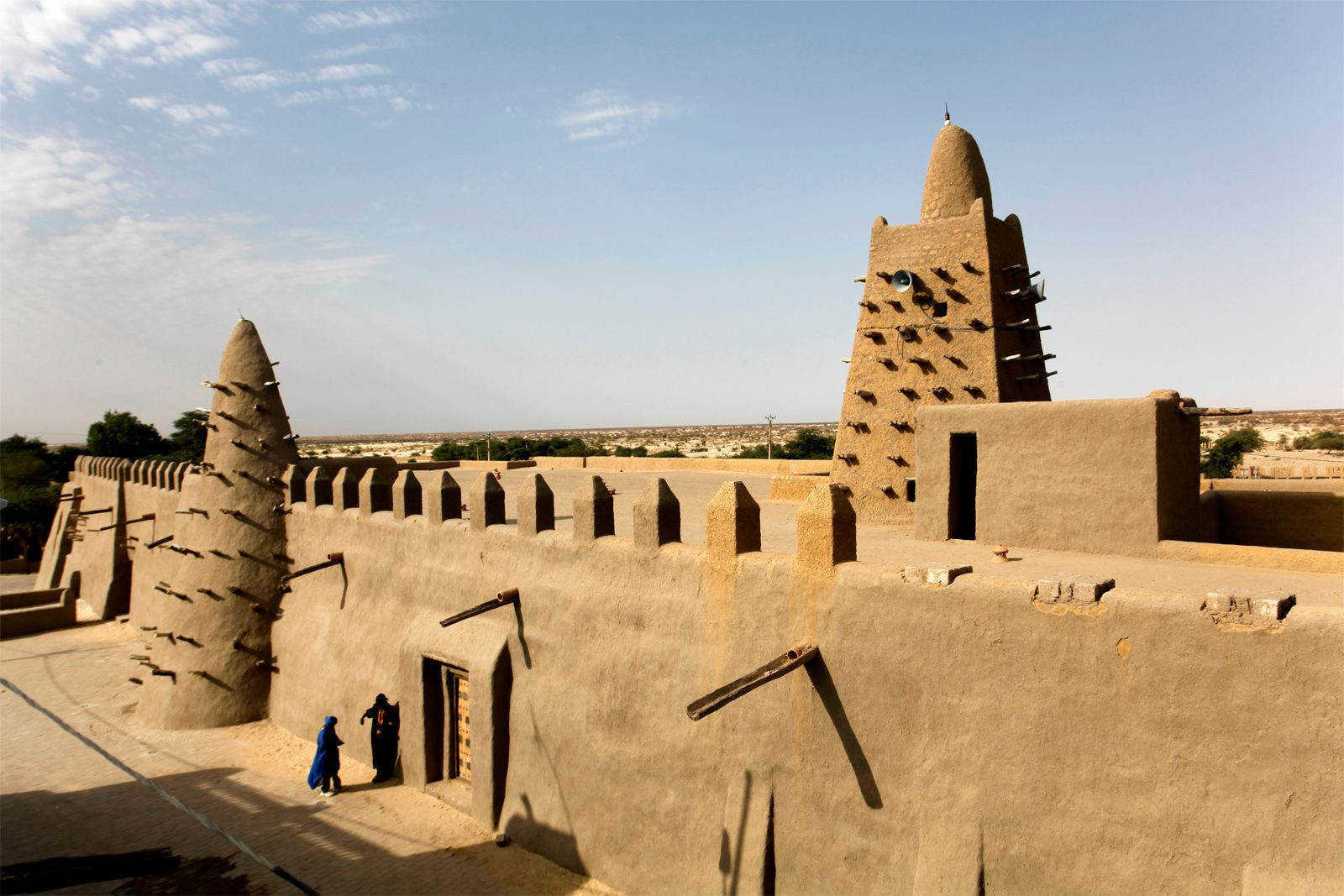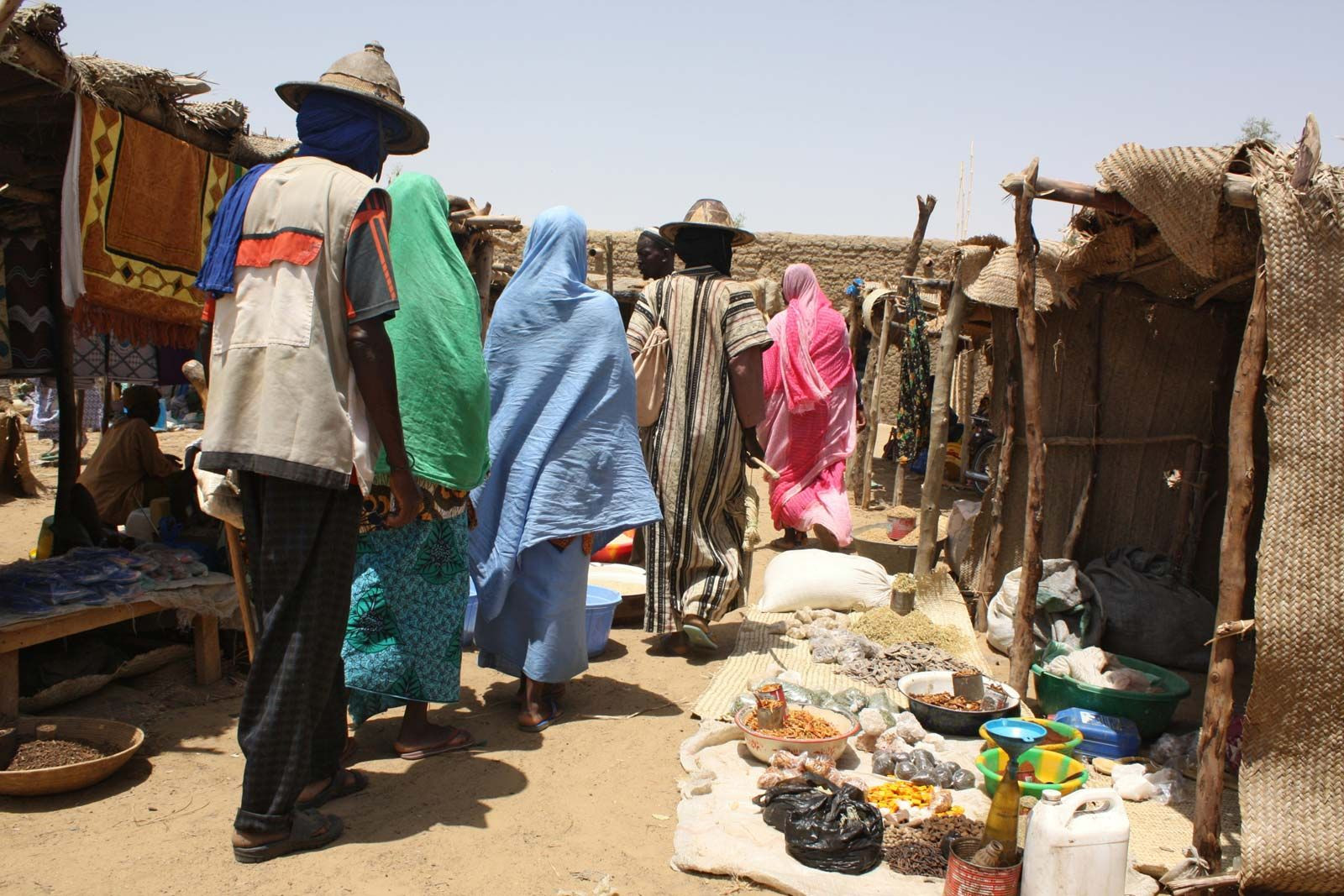Timbuktu, a name that resonates with mystery and ancient allure, often evokes images of a faraway, almost mythical city. But where exactly is this fabled place? Nestled on the southern edge of the vast Sahara Desert, Timbuktu is a real city with a rich and storied past, located in the western African nation of Mali. Historically significant as a pivotal trading post along the trans-Saharan caravan routes and a renowned center of Islamic scholarship and culture, Timbuktu holds a unique place in history. Designated a UNESCO World Heritage site in 1988, its location at the crossroads of desert and river has shaped its destiny for centuries.
Timbuktu’s origins trace back to around 1100 AD, starting as a seasonal settlement for Tuareg nomads. Legend suggests the city’s name derives from an old woman entrusted with overseeing the camp while the Tuareg tribes traversed the Sahara. Her name, variations of which include Tomboutou or Timbuktu, is said to mean “mother with a large navel,” possibly referencing a physical characteristic. This strategic location, where the arid desert met with vital water sources, naturally fostered its growth into a crucial trading hub. By the late 13th or early 14th century, Timbuktu was integrated into the expansive Mali Empire, further solidifying its importance.
By the 14th century, Timbuktu had blossomed into a thriving epicenter for the trans-Saharan trade, particularly in gold and salt. Simultaneously, it flourished as a beacon of Islamic culture and learning. Remarkably, three of Western Africa’s oldest mosques – Djinguereber, Sankore, and Sidi Yahia – were erected during the 14th and early 15th centuries, testaments to its deep-rooted Islamic heritage. Following his celebrated pilgrimage to Mecca in 1324, the Malian emperor Mansa Musa commissioned the construction of the grand Djinguereber Mosque and a royal residence. The renowned architect Abu Ishaq al-Sahili from Granada was later entrusted with designing the Sankore mosque, around which the prestigious Sankore University emerged. The Sankore mosque endures to this day, a marvel of historical architecture, owing to al-Sahili’s innovative incorporation of a wooden framework within its mud walls, facilitating essential annual maintenance after the rainy season. Despite the Tuareg regaining control in 1433, trade and intellectual pursuits continued to prosper in Timbuktu, its scholarly reputation attracting minds from across the region and beyond. By 1450, Timbuktu’s population swelled to approximately 100,000, with a remarkable 25,000 scholars residing within its walls, many of whom had pursued studies in Mecca and Egypt, underscoring its status as a global intellectual center of its time.
In 1468, the Songhai ruler Sonni Ali conquered Timbuktu. While initially showing some hostility towards the city’s Muslim scholars, his successor, Muhammad I Askia, the founder of the Askia dynasty, embraced the intellectual elite, utilizing them as legal and moral advisors. The Askia dynasty era (1493–1591) marked Timbuktu’s zenith in both commerce and intellectual advancement. Merchants from distant cities such as Ghadamis, Augila, and various North African centers converged in Timbuktu, trading Saharan salt and North African goods for coveted gold and slaves.
However, Timbuktu’s golden age began to wane after its capture by Morocco in 1591. Suspicions of disloyalty led to the arrest of scholars in 1593, resulting in casualties and the exile of others to Morocco. Compounding the decline, the small Moroccan garrisons proved insufficient to protect the city, leaving Timbuktu vulnerable to repeated attacks and conquests by various groups including the Bambara, Fulani, and Tuareg, leading to instability and disruption of trade and scholarship.
European explorers began to reach Timbuktu in the early 19th century, adding to its mystique in the Western world. Scottish explorer Gordon Laing was the first European to arrive in 1826, followed by French explorer René-Auguste Caillié in 1828. Caillié, disguised as an Arab and fluent in Arabic, spent two weeks in the city and became the first explorer to return to Europe with firsthand accounts of Timbuktu. German geographer Heinrich Barth reached Timbuktu in 1853 during his extensive African expedition, further contributing to European knowledge of the city.
French forces captured Timbuktu in 1894 and incorporated it into French Sudan. While the French administration undertook some restoration efforts, Timbuktu did not regain its former prominence. In 1960, Timbuktu became part of the newly independent Republic of Mali.
Today, Timbuktu functions as an administrative center within Mali. Recognizing its invaluable cultural heritage, restoration projects were initiated in the late 1990s to safeguard its ancient mosques from environmental threats and decay. However, in 2012, renewed conflict brought further challenges when Tuareg rebels and Islamic militants seized control of northern Mali, including Timbuktu. While Tuareg rebels initially claimed the region as the independent state of Azawad, Islamic militant groups quickly gained dominance, imposing strict interpretations of Islamic law and, tragically, damaging and destroying historical religious monuments and artifacts deemed idolatrous, including revered saints’ tombs within the Djinguereber and Sidi Yahia mosques. Following the expulsion of militants in early 2013, efforts to repair the damage commenced. Despite facing modern challenges, Timbuktu endures, its location in Mali, West Africa, a testament to its historical resilience and enduring legacy as a city of trade, scholarship, and cultural significance in the heart of the Sahara.


 Timbuktu, Mali: Great Mosque
Timbuktu, Mali: Great Mosque Timbuktu, Mali: market
Timbuktu, Mali: market